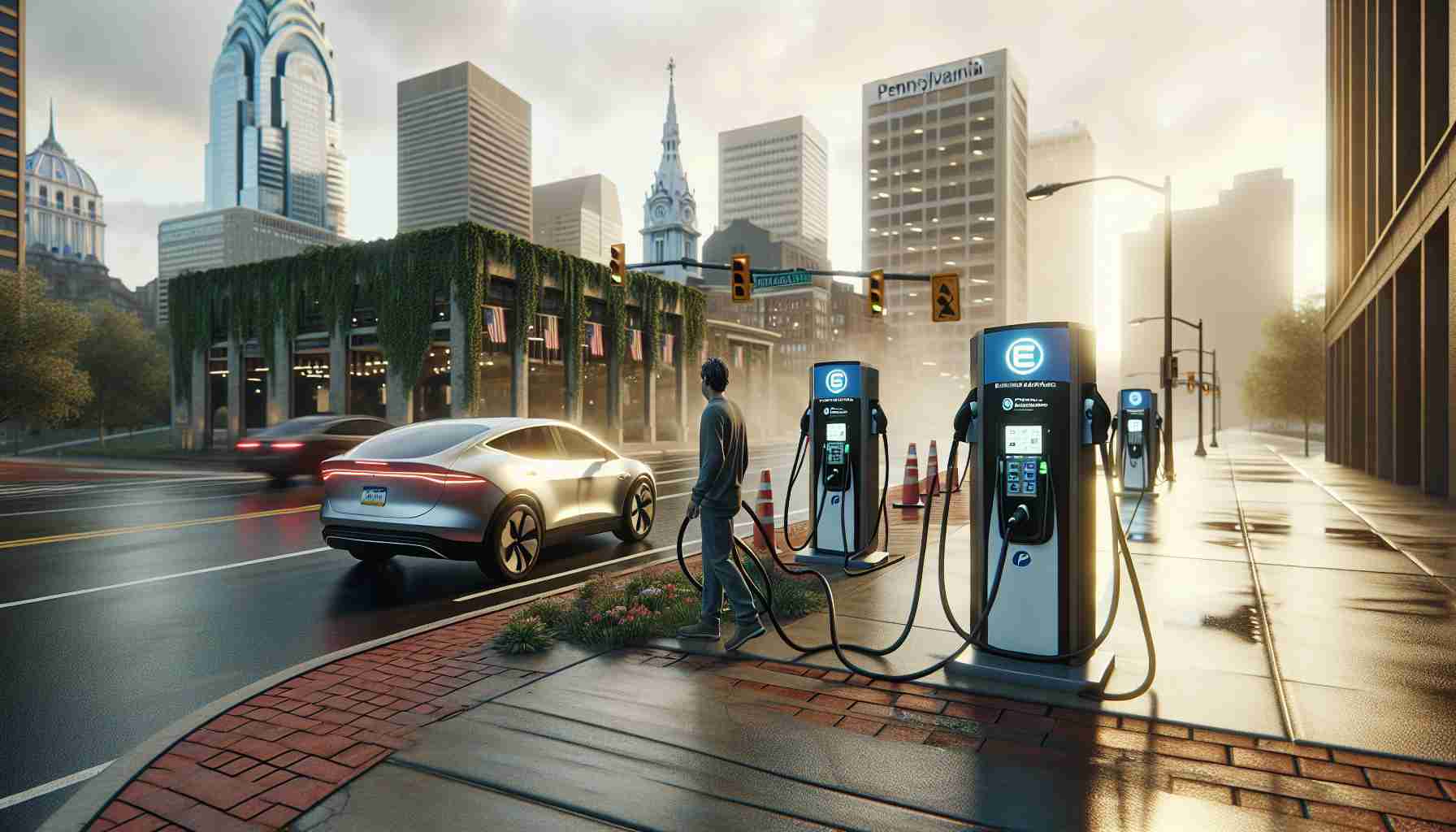Exciting Developments in Pennsylvania’s Electric Vehicle Infrastructure
The Pennsylvania Department of Transportation (PennDOT) has proudly unveiled two state-of-the-art Electric Vehicle (EV) charging stations, enhancing the state’s commitment to sustainable transportation. These new installations, situated along I-81 in Lebanon County and I-79 in Butler County, signify a significant step forward in the National Electric Vehicle Infrastructure (NEVI) initiative, backed by the Bipartisan Infrastructure Law.
With the addition of these stations, Pennsylvania now boasts a total of five charging locations under the NEVI program. Since launching the program, over 4,300 charging sessions have occurred, enabling drivers to travel more than 525,000 miles using electric vehicles. This expansion is part of the Shapiro Administration’s effort to tackle climate issues and promote economic advancement through innovative transportation methods.
PennDOT Secretary Mike Carroll highlighted the importance of these charging stations in improving travel reliability and environmental responsibility across the state. The new facilities in Jonestown and Slippery Rock feature four charging ports each, designed to support essential travel needs.
The investment of over $1.3 million per station underscores the federal commitment to fostering a robust EV infrastructure. Offering high-capacity charging options sheltered from the elements, these stations ensure motorists have the necessary resources to embrace electric vehicle technology. Future plans aim to incorporate additional charging sites within community settings, advancing Pennsylvania’s green transport goals.
Pennsylvania Paves the Way for Electric Vehicle Adoption with New Charging Stations
Overview of Pennsylvania’s EV Charging Infrastructure
The recent unveiling of two cutting-edge Electric Vehicle (EV) charging stations in Pennsylvania marks an important stride towards sustainable transportation in the state. Located along major interstate routes I-81 in Lebanon County and I-79 in Butler County, these stations are part of the broader National Electric Vehicle Infrastructure (NEVI) initiative, funded by the Bipartisan Infrastructure Law.
Key Features of the New Charging Stations
– High-Capacity Charging: Each of the new facilities is equipped with four charging ports, capable of supporting multiple EVs simultaneously. This design addresses the increasing demand for reliable EV charging options.
– Weather Protection: The stations feature sheltered charging options, providing drivers with the ability to recharge their vehicles regardless of weather conditions.
– Strategic Locations: The choice of locations is significant—the stations are positioned along busy highways, facilitating easier access for long-distance travelers and commuters alike.
Economic and Environmental Impact
The launch of these charging stations aligns with the Shapiro Administration’s vision to promote green transportation solutions and enhance economic growth through sustainable practices. By providing better travel reliability for EV users, Pennsylvania aims to foster greater adoption of electric vehicles, which is essential for reducing greenhouse gas emissions associated with traditional combustion engines.
Future Expansion Plans
Pennsylvania’s commitment to enhancing its EV infrastructure does not stop here. Plans are underway to introduce additional charging sites in community settings, making electric vehicle technology more accessible to all residents. This initiative not only serves those traveling through the state but also supports local populations, encouraging a shift towards sustainable transportation.
Insights on EV Infrastructure Trends
With the growing push towards electric vehicle adoption, states across the U.S. are implementing similar initiatives to develop robust charging networks. According to industry trends, the EV market is expected to expand significantly, necessitating comprehensive infrastructure to support the influx of electric vehicles. This aligns with national goals for reducing carbon footprints and combating climate change.
Potential Limitations
Despite the positive steps taken, challenges remain in the widespread adoption of electric vehicles. Some potential limitations include:
– Initial Cost of EVs: The higher purchase price of electric vehicles compared to their gasoline counterparts can deter potential buyers, although incentives are available.
– Charging Network Accessibility: While new stations are being installed, there remain rural areas with limited access to charging infrastructure.
Conclusion
Pennsylvania’s latest investment in EV charging stations represents a critical move towards a sustainable future. By enhancing the state’s EV infrastructure, officials are not only responding to the immediate needs of electric vehicle users but also laying the groundwork for a greener, more efficient transportation network.
For more information on Pennsylvania’s initiatives towards electric vehicles, visit PennDOT.
